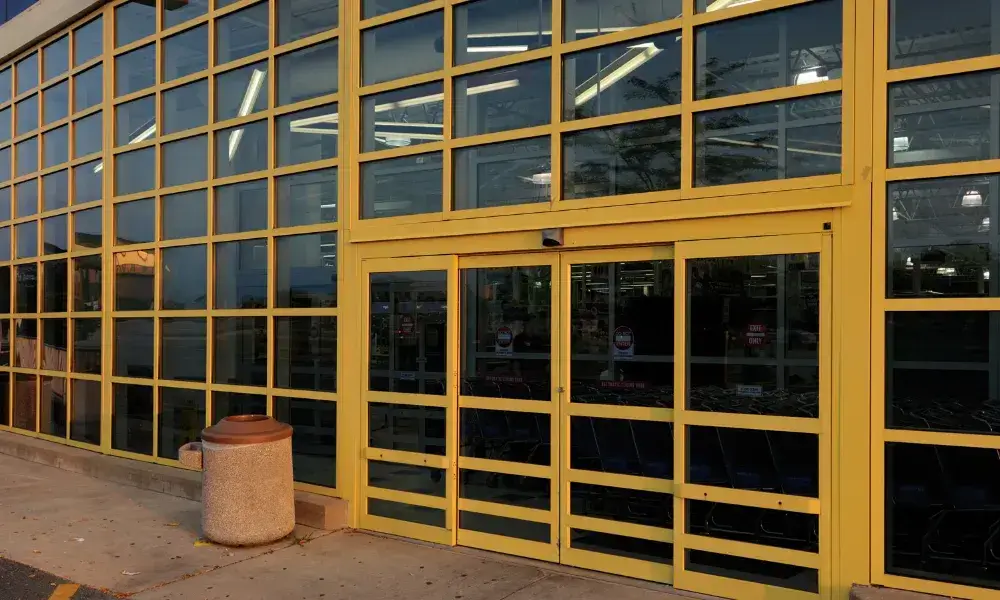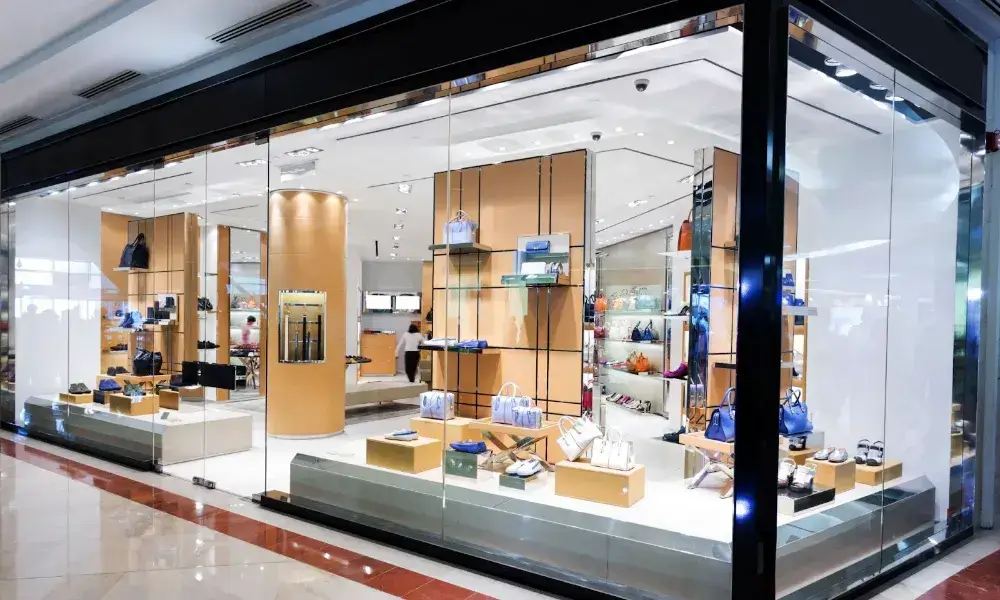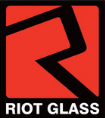Written By: Brad Campbell | June 24, 2025
Over the last few years, security glass has become a staple of modern commercial architecture. With threats like forced entry, smash-and-grab theft, looting, and violent attacks on the rise, building owners and architects are increasingly turning to security glazing as a critical layer of protection.
Today’s security glass is not only stronger than ever, but is also available in a wide range of aesthetic options that complement contemporary building designs.
In this updated guide, we’ll explore the benefits of using security glass for commercial architecture, the most common types of commercial security glazing, and key considerations when selecting the right solution for your property.
The core reason to use security glass is protection — protection for people, property, and peace of mind.
Unlike standard commercial glass, which shatters easily into sharp, hazardous shards, or, in the case of tempered glass, crumbles upon impact, security glazing is engineered to resist breakage and maintain its integrity even after repeated high-force blows.
Whether your concern is forced entry, vandalism, riots, or ballistic threats, the right type of glazing can delay or completely deny access, giving occupants critical time to respond or evacuate and get to safety.
With the expanding availability of retrofit security glazing solutions, such as those from Riot Glass, security glass is no longer just for new construction or expensive renovations — it’s accessible and cost-effective for a wide range of commercial applications.

Modern security glazing generally falls into three main categories: laminated glass, polycarbonate glazing, and glass-clad polycarbonate (GCP). Each has its own unique strengths, drawbacks, and ideal use cases.
Laminated security glass is made by sandwiching a tough thermoplastic interlayer between two sheets of strengthened glass. When struck, the glass may crack or spall, but it usually holds together, thanks to the interlayer.
Pros:
Cons:
This type of commercial security glass is best for storefronts, lobbies, or offices in areas with a lower threat profile but a desire to deter quick, opportunistic break-ins.
Unlike laminated glass, polycarbonate glazing contains no actual glass. It’s made from one or more layers of impact-resistant plastics (primarily polycarbonate, but can also contain acrylics) and can stop even the most aggressive forced entry attempts.
Pros:
Cons:
Polycarbonate is ideal for properties with a higher risk of burglary or smash-and-grab theft, such as pharmacies, luxury retailers, and cannabis dispensaries. It’s also a good choice for active threat access denial in schools and other facilities (ballistic-grade polycarbonate glazing is available).

GCP glazing combines layers of glass and polycarbonate for a hybrid solution offering very high levels of impact and ballistic resistance. This bullet-resistant glazing is often used in government buildings, banks, and other high-risk facilities.
Pros:
Cons:
GCP is the perfect solution for applications where active threat protection is non-negotiable, such as in courthouses, government offices, and other high-security properties.
Security glazing is quickly becoming a standard component of resilient, future-focused building design, making its use one of the top security industry trends of 2025.
Choosing the right type of security glass for your architecture means striking a balance between protection, aesthetics, and budget. Consider the following factors to help you make your choice.
Start by assessing the likely risks to your building. Is your biggest concern smash-and-grab theft? Rioting and looting? Gun violence? Choose the glazing type that’s rated to withstand those specific threats.
For example:
Security doesn’t have to be ugly. In fact, many property owners choose security glass because it eliminates the need for unsightly solutions like window bars.
If your business depends on natural light and window visibility — like in showrooms or retail spaces — opt for clear or lightly tinted polycarbonate or laminated glass that won’t interfere with sightlines or lighting. You can always combine it with other solutions, such as roll-down security shutters or side-folding grilles, for additional after-hours protection as well.

Like any construction material, security glass must fit into a realistic budget. The good news is that you don’t need to go all-in with the highest-grade glazing on every window.
Cost-saving strategies include:
Riot Glass is a proprietary line of retrofit-ready security glazing solutions engineered to outperform traditional laminated, polycarbonate, and GCP glazing.
Using advanced formulations of security glass and plastics, including polycarbonates and acrylics, as well as proprietary security framing systems, Riot Glass delivers unmatched protection against:
Whether you’re retrofitting an existing commercial space or designing a new building, Riot Glass offers scalable, cost-effective solutions that blend seamlessly with your architecture.
From preventing theft to protecting against worst-case active threat scenarios, the right security glazing solution can safeguard your assets, improve your building’s look, and offer peace of mind to occupants and visitors alike.
Need help selecting the best solution for your building? Riot Glass experts can help you assess risks, evaluate your options, and create a customized security glazing plan that works with your goals and budget.
Contact us today for a free consultation.

HOW CAN WE HELP YOU?
